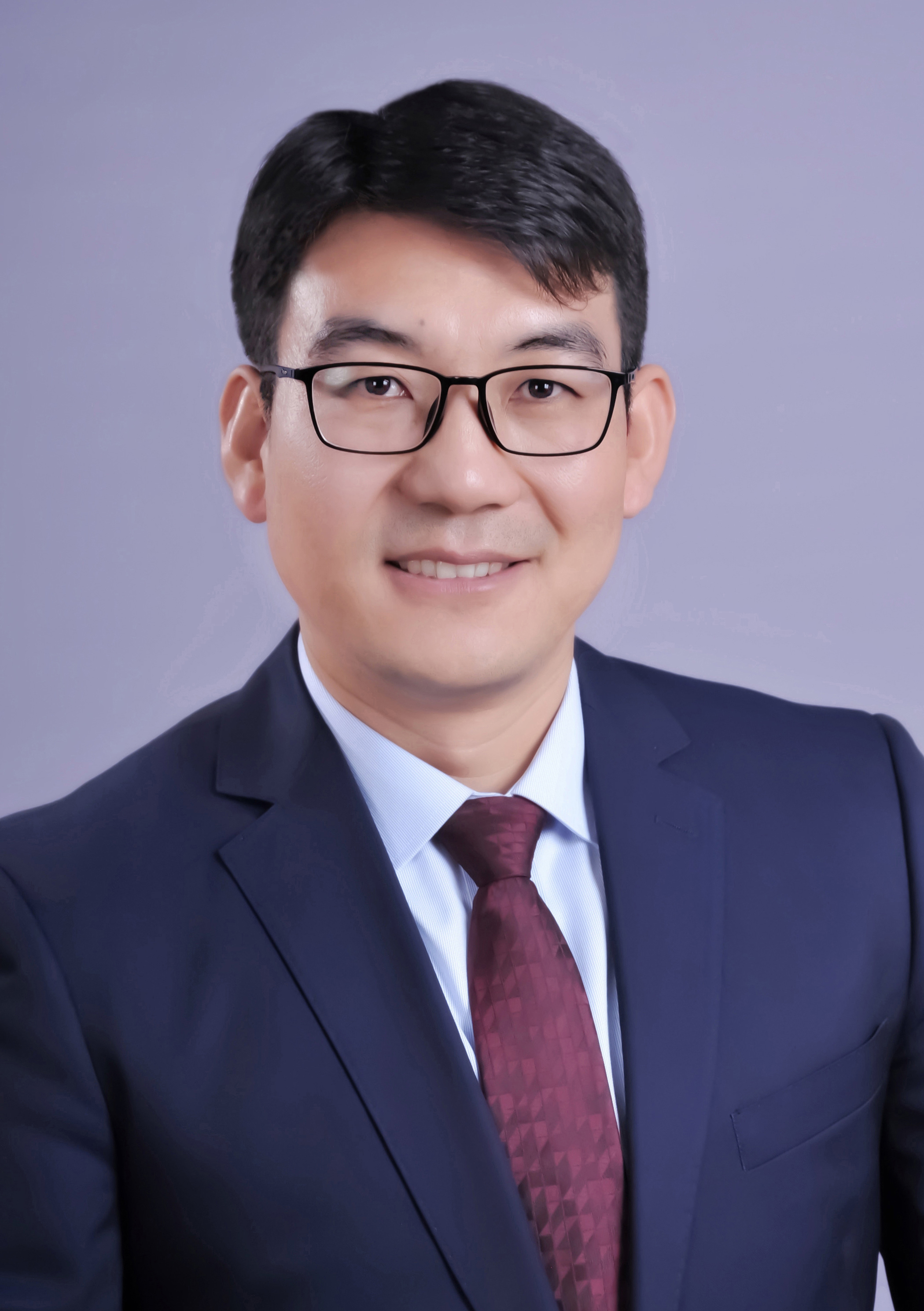2023.09--Present, Professor (full), Doctoral supervisor in Particle Physics and Nuclear Physics, School of Physical Science and Technology, Lanzhou University, Lanzhou, China
2019.07--2023.09, Young Researcher, School of Physical Science and Technology, Lanzhou University, Lanzhou, China
2017.07--2019.07, Postdoc in Particle Physics Experiment, Institute of High Energy Physics, CAS, Beijing, China
2012.09--2017.07, PhD in Particle Physics Experiment, Department of Engineering Physics, Tsinghua University, Beijing, China
1. Research Direction: High Energy Physics, or Particle Physics.
The goal is to understand and reveal what are the most fundamental constituents of matter and how these elementary particles interact. BESIII experiment at the BEPCII accelerator is one of experimental facilities for studying fundamental particle physics, which is a major upgrade of BESII at the BEPC. BESIII physics covers the studies of hadron physics and τ-charm physics with the highest accuracy achieved until now. Our research mainly focus on Physics Data Analysis at BESIII, especially for study of baryon physics. Our team so far has published many interesting and important results in experiment, which covers the studies of baryon anti-baryon production in J/psi and psi(2S) decays and e+e- annihilation, observation of an excited baryon state Xi(1820), observation of new baryonic decay process in J/psi and psi(2S) decays, as well as search for baryon anti-baryon production in Charmonium-like state, Y(4260/4230), etc..
2. At present, our research interests at BESIII experiment mainly focus on following aspects:
1) Baryon pair production in e+e- collision, Baryon form factor
2) Baryon polarization in Charmonium decay, CP violation in hyperon decay
2) Search for the excited baryon states
3) Search for the Charmonium (-like) or tetraquark states, etc.
4) ...
Publications:
ORCID: https://orcid.org/0000-0001-8612-8045
iNSPIRE:http://inspirehep.net/author/profile/Xiong.Fei.Wang.1
====== Year in 2023 ======
[1] BESIII Collaboration, "Measurement of the cross section of e+e−→Ξ−Ξ+bar at center-of-mass energies between 3.510 and 4.843 GeV", JHEP11(2023)228.
[2] BESIII Collaboration, "Measurement of Λ transverse polarization in e+e− collisions at \sqrt{s} =3.68−3.71 GeV", JHEP10(2023)081.
[3] BESIII Collaboration, "First simultaneous measurement of Ξ0 and Ξ0-bar asymmetry parameters in ψ(3686) decay", Phys. Rev. D(Letter) 108, L011101(2023).
[4] Hao Liu, Jingxu Zhang and Xiongfei Wang, "CP Asymmetry in the Ξ Hyperon Sector", Symmetry 15, 214 (2023).
[5] BESIII Collaboration, "Study of e+e-→Ω-Ω+ at center-of-mass energies from 3.49 to 3.67 GeV", Phys. Rev. D 107, 052003 (2023).
======Year in 2022=======
[1] BESIII Collaboration, "Probing CP symmetry and weak phases with entangled double-strange baryons", Nature, 606, 64 (2022).
[2] BESIII Collaboration, "Observation of Ξ^- hyperon transverse polarization in ψ(3686)→Ξ^-Ξ^+bar", Phys. Rev. D(Letter) 106, L091101(2022).
[3] Xiongfei Wang, et al,“北京谱仪 III 开创探索正反物质不对称的新方法[J]”,《现代物理知识》, 2022年04期54-61页.
[4] BESIII Collaboration, "Study of the processes χcJ → Ξ^-Ξ^+bar and Ξ^0Ξ^0bar", JHEP, 06, 074 (2022).
[5] Xiongfei Wang,“Hyperon pair production at BESIII”, Rev. Mex. Fis. Suppl. 3 (2022) 3, 0308074.
[6] BESIII Collaboration, "Measurement of Λ baryon polarization in e^+e^−→ΛΛbar at sqrt(s) = 3.773 GeV", Phys. Rev. D(Letter) 105, L011101 (2022).
[7] Xiongfei Wang and Guangshun Huang, "Electromagnetic Form Factor of Doubly-Strange Hyperon, Symmetry 14, 65 (2022).
======Year in 2021======
[1] BESIII Collaboration, "Measurement of the cross section for e^+e^- → ΛΛbar and evidence of the decay ψ(3770)→ ΛΛbar", Phys. Rev. D(Letter) 104, L091104 (2021).
[2] BESIII Collaboration, "Measurement of cross section for e^+e^- → Ξ^-Ξ^+bar near threshold at BESIII", Phys. Rev. D 103, 012005 (2021) .
[3] BESIII Collaboration, "Measurement of cross section for e^+e^- → Ξ^0Ξ^0bar near threshold", Phys. Lett. B820 136557 (2021).
[4] BESIII Collaboration, "Observation of ψ(3686)→Ξ(1530)^0Ξ(1530)^0bar and Ξ(1530)^0Ξ0bar", Phys. Rev. D 104, 092012 (2021).
[5] Xiongfei Wang, "Study of baryon pair production at BESIII", PoS, CHARM2020, 026 (2021).
====== Year in/before 2020======
[1] BESIII Collaboration, "Measurement of the cross section for 𝑒+𝑒−→Ξ−Ξ+bar and observation of an excited Ξ baryon", Phys. Rev. Lett. 124, 032002 (2020).
[2] BESIII Collaboration, "Observation of ψ(3686)→Ξ(1530)^-Ξ(1530)^+bar and Ξ(1530)^-Ξ^+bar", Phys. Rev. D(Rapid Communication) 100, 051101 (2019).
[3] Xiongfei Wang, Bo Li, Xinchou Lou and Yuanning Gao "Helicity amplitude analysis of J/ψ and ψ(3686)→Ξ(1530)Ξ(1530)bar", Nucl. Phys. B941, 861-867 (2019).
[4] Xiongfei Wang, "Experimental Status of Conventional Charmonium Spectroscopy", EPJ Web of Conferences 202, 02002 (2019).
[5] BESIII Collaboration, "Study of J/ψ and ψ(3686)→Σ(1385)^0Σ(1385)^0bar and Ξ^0Ξ^0bar", Phys. Lett. B770 (2017) 217-225.
[6] BESIII Collaboration, "Study of ψ decays to the Ξ^-Ξ^+bar and Σ(1385)^∓Σ(1385)^±bar final states", Phys. Rev. D93, 072003 (2016).
[7] BESIII Collaboration, "Measurements of baryon pair decays of χcJ mesons", Phys. Rev. D87, 032007 (2013).
[1] National Natural Science Foundation of China, Measurement of cross section for e+e- to XiXi-bar at center-of-mass energy between 2.64GeV and 4.6GeV at BESIII, 2020/01-2022/12, In research (Chair).
[2] Postdoctoral Science Foundation of China (First Prize), Measurement of cross section for e+e- to DDbar above open charm threshold, 2018/05-2019/07, Finished (Chair).
[3] National Natural Science Foundation of China, Measurement of cross section of vector and pseudoscalar mesons in 𝒆+𝒆- annihilation in the center of mass energies between 4.0 to 4.6 GeV at BESIII, 2019/01-2022/12, in research (Participants).
[4] National Natural Science Foundation of China, Study of doubly-charm baryon at LHCb, 2016/01-2019/12, In research (Participants).
[5] National Natural Science Foundation of China, Study of inclusive and exclusive hadronic decays at BESIII, 2015/01-2018/12, In research (Participants).
1. National Youth Talent Program
2. 2017 Chung-Yao Chao Fellowship:http://www.ihep.cas.cn/xwdt/gnxw/2017/201705/t20170517_4793196.html
1. International Conferences/Talks:
1) "Hyperon Physics", 21st Lomonosov Conference,Moscow,2023.08
2) "Study of Hyperon Pair Production at BESIII", HADRON2021,Mexico(online),2021.07
3) "Study of Baryon Pair Production at BESIII", CHARM2020,Mexico(online),2021.06
4) "Baryon anti baryon pair production in heavy meson deck and in e+e- annihilation at BESIII", Perspectives in Hadron Physics, Guy Nhon, Vietnam, Sep. 2019
5) "Study baryon properties via charmonium decisions at BESIII", QWG2019, Turin, Italy, May 2019
6) "Experimental status of conventional charm spectrum", CHARM2018, Novosibirsk, Russia, May 2018
7) "Baryon spectrum at BESIII", ENPC2015, Groningen, the Netherlands, Sep. 2015
2. Domestic Conferences/Talks:
1) "Experimental status of conventional charm spectrum", 全国第十六届重味物理会议和CP破坏研讨会, Zhengzhou, Henan, 2018.10
2) "Overview of 1-- charmonium states decaying to baryon anti-baryon pairs at BESIII", 中国物理学会高能物理分会第十届全国会员代表大会暨学术年会, Shanghai, June 2018
3) "Estimation of radiation backgrounds at CEPC", 2017 International Workshop on High Energy Circular Electron Positron Collider, Beijing, December 2017 (poster)
...
Warmly welcome young people who love scientific research and particle physics experiment to join my team!
Also welcome the undergraduate and graduate students who are interested in the particle physics experiment to consult and discuss at any time!
天行健, 君子以自强不息;
地势坤, 君子以厚德载物!







